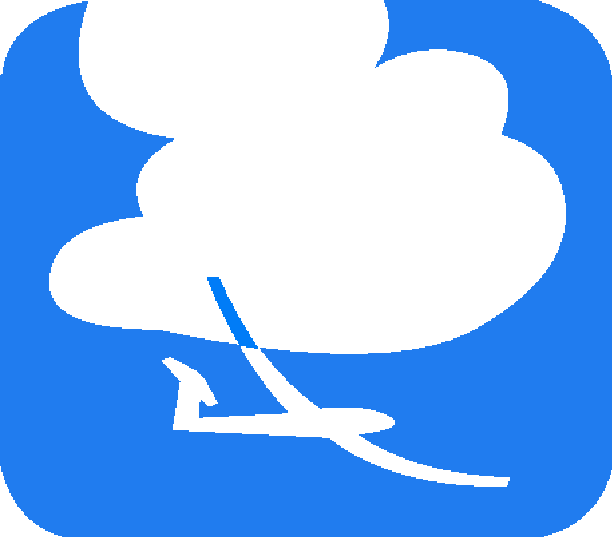

The use of this training syllabus is intended for the instructors, students and members of Skyline Soaring Club, Inc; located in Front Royal Virginia. Other commercial or non-profit organizations and instructors may also use this material - see sections on "License and Restrictions" and "Using the Training Syllabus on Paper" under the heading "Non-Skyline Instructor Use"
Flight Instructors, web masters and authors outside of Skyline Soaring Club are welcome to use any or all of Skyline Soaring Club's training materials contained in this document, as they see fit, free of charge from Skyline Soaring Club, provided the conditions are met under the Creative Commons License version 3.0. Full details about this license can be found at the following URL: http://creativecommons.org/licenses/by/3.0/us/
Chief Flight Instructor: John Noss
Revised: 24 February 2025
The contents of this syllabus is the result of collaborative efforts of the Certified Flight Instructors for Skyline Soaring Club, Inc; operating out of Front Royal, VA. Feedback or corrections for the Skyline Soaring Training Syllabus can be sent to the Chief Flight Instructor, John Noss. john@noss.ws . Feedback is welcome, especially for suggestions on external links.
The training syllabus is a living document. Clubs that use the syllabus are strongly encouraged to subscribe to the Skyline Syllabus Mailing List. Any updates to the contents of the syllabus are automatically mailed as the changes are made. To subscribe, visit the website https://members.skylinesoaring.org/mailman/listinfo/syllabus . Nobody is permitted to send mail to that mailing list except for the site administrator, and only when updates are made to the training syllabus.

Other Rights - In no way are any of the following rights affected by the license:
Notice - For any reuse or distribution, you must make clear to others the license terms of this work. The best way to do this is with a link to http://creativecommons.org/licenses/by/3.0/us/
Pilots already possessing an FAA Rating, but for a different category, (such as Airplane, Single Engine Land, Rotorcraft, Lighter-Than-Air, etc.), are NOT considered by the FAA as a "student pilot." This pilot is a rated pilot seeking to add a new category rating. However, as far as Skyline Soaring Club's program is concerned, the flight instructors will regard this candidate identically to an unrated student pilot. The transition pilot will be put through the same program that an ab-initio pilot would receive. The transition pilot will probably go through the training program much more quickly, but the Skyline Instructors must verify that the candidate meets or exceeds all of the requirements that a first-solo § 61.87 student would before his first solo (including the pre-solo written test). Upon completion of the training program, the transition pilot will receive a § 61.31(d)(2) endorsement (see also AC 61-65J ¶ A.72), and not a § 61.87 endorsement, like a student pilot would.
The Training Syllabus covers all of the required areas that are specified in 14 CFR § 61.87. Each lesson plan is a sample of what is to come. In each lesson plan is a section of required reading. It is understood that the student will have read each of the items in the required reading section before coming to fly with the instructor. Failure to do reading assignments ahead of time is a consistent and reliable indicator of delayed progress. Delayed progress adds unnecessary personal expense to complete the training program.
Skyline Soaring Club stores all of the records about a student's flight training record electronically. There is no need to print the forms at the end of this document, except for reference. After the flight instruction session, the instructor will automatically be notified by e-mail of any recent flights with his students. The instructor will score the flights as appropriate, scoring each section with a score 1 through 3. A score of "1" indicates that the content was introduced. A score of "2" indicates that the student performed the maneuver or procedure. A score of "3" indicates that the candidate has performed the maneuver or procedure to the solo standards stated in the appropriate lesson plan. Scores of "4" are reserved for post-solo students directly training for their Private Pilot Practical Test.

Flights where there is significant need to address problem areas on the next flight are marked with a red exclamation point. This is not meant as a failure, but rather as an urgent indicator to the next instructor that this is an area that needs focus and attention. Once the instructor completes his report, he will be given an opportunity to write an optional essay describing details of the lesson session.
The completed lesson report is mailed to the Skyline Soaring Club instructors, as well as the student for future review and planning. The student may view his progress page at any time, and get a clear indication of what lesson segments are still required before solo flight is considered.
For non-Skyline instructors, tracking a student's progress can be done by the two forms at the end of this document.
Use the Training Syllabus Tracking Sheet to keep track of which instructors have signed off a particular section as demonstrated at solo quality. When the student has completed all areas listed as required for solo flight, the instructor and student will sign the end of the document, indicating that all instruction has been given to the satisfaction of the student.
Use the Flight Progress Tracking Sheet to track individual flights. Multiple copies of these two pages will be necessary to fully document the flight record of the student. At the right-most column of this sheet, indicate the maximum score achieved for each lesson segment. In the following example, Frank Schüler has had a total of 11 flights with 6 different instructors (which can often happen in a club environment). Each instructor gave a score of 1, 2, or 3 depending on the student's progress.
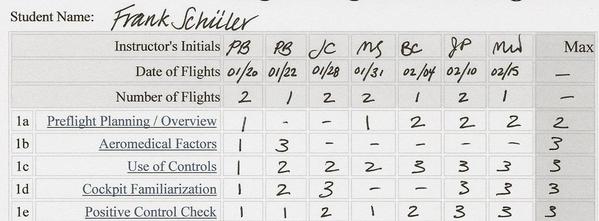
Student solo is not permitted until a score of "3" has been documented and achieved for all sections listed as required for solo flight. Refer to the Training Syllabus Tracking Sheet for a list of all sections required for student solo. Once all of the appropriate sections have been demonstrated at the solo proficiency level or higher, both the student and instructor will sign the affirmation statement. This statement can be found at the end of the Training Syllabus Tracking Sheet. This indicates that both the instructor and student have successfully accomplished the full training program, and that it has been completed to their satisfaction. The instructor will keep the original signed document, and prepare a copy for the student to keep for his or her own record keeping.

Each section in the printed version of the training syllabus contains a QRcode. The QR code is located in the upper right hand corner of each section of the syllabus (also shown here). These QR codes are included as a convenience for smart-phone equipped instructors or students who are using a printed copy of the syllabus, and are not near an Internet connected computer. While using a smart phone with a QR code reader, the savvy instructor or student can pull up the online copy of that particular page of the syllabus. Use this to follow any hyperlinks or videos that the lesson plan may include.
The Federal Aviation Administration sponsors a continuing training program called WINGS. All members of the Skyline Soaring Club are required to have completed the Special Airspace training required by 91.161. This training is accomplished by completing a 1/2 credit course in WINGS. Therefore, all members of the club should have a WINGS account.
Many of the training items in this syllabus closely correlate to flight topics in the FAA WINGS Pilot Proficiency Program. When performing currency flights, you may use these two charts to determine which flight activities in the syllabus are required for the FAA WINGS flight activities.


|
Glider Pilot Logbook Soaring Society of America |
 |
Before or immediately after the first lesson, the student must have a Pilot Logbook. The Glider Pilot logbook is generally given to the student as a part of the FAST package. The logbook can also be purchased from the club, or purchased online from the Soaring Society of America for a modest price. Your instructor is required to legibly record any flight and ground instruction in your log book, so it is required to be with you each time you have a lesson at the club. |
|
Glider Flying Handbook FAA |
 |
This book is published by the Federal Aviation Administration. It is considered public domain. In electronic form, this book is available for free. The FAA publishes the entire book as a low resolution PDF, or as higher resolution versions by each chapter. Get the latest electronic version of the GFH by going to https://www.faa.gov/regulations_policies/handbooks_manuals/aviation/glider_handbook/ . Many of the lesson plans included in this syllabus reference certain pages in this book. You can purchase a copy of this book from the Soaring Society of America for $32.00. |
|
Pilots Handbook of Aeronautical Knowledge FAA |
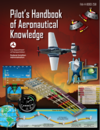 |
This book is published by the Federal Aviation Administration. It is considered public domain. In electronic form, this book is available for free. This book focuses on flying airplanes. This book is included as a resource for soaring mainly because some key subjects are not adequately covered in the Glider Flying Handbook. It is not recommended that you purchase this book. Lesson plans in this training syllabus that include topics only covered in the Pilot Handbook of Aeronautical Knowledge link directly to the appropriate chapter. You are not expected to purchase this book, but you may find it a handy reference for many topics in aviation. |
Student Pilot License: As you near your first solo, you will need a student pilot's certificate. If you are already a rated pilot seeking an additional category glider rating, your pilot's license will suffice. Since 1 April 2016, all student pilots must go through a TSA background check. Begin the process for getting a student pilot certificate by signing up with the FAA's Integrated Airman Certification and Rating Application (IACRA) at https://iacra.faa.gov/IACRA/Default.aspx .
FAR/AIM As you progress through the training program, it is highly recommended that you own a copy of the FAR/AIM. All of the regulations are online and linked throughout this syllabus, but you should still have the book for ready reference and reading.
Local Sectional Chart You must be familiar with the airspace around our airport. There are some very complicated and dangerous airspaces near to our field, and owning a sectional is an important step toward understanding the airspace and air traffic in our area. You may use on-line sectional tools such as skyvector.com, but you may not use those charts for in-flight navigation. There are two sectional charts for our area. The Washington Sectional covers the airspace to the east and south of our base of operations. The Cincinnatti chart covers the areas to the west. These charts can be purchased at our FBO, or on-line. The FAA provides an excellent resource on how to read aeronautical charts in the 12th edition of the Chart Users Guide.
If this is your first pilot rating, or if this is your first pilot rating at the Private Pilot level, you will need to complete a knowledge test, administered by the FAA. If you already have a Private Pilot rating for any powered aircraft, you are not required to pass the FAA knowledge exam for gliders. Please see the FAA's general information about the knowledge tests (https://www.faa.gov/pilots/testing/).
It is strongly recommended that pilots who are nearing their first solo should have their FAA knowledge test taken and passed before or immediately following their first solo. Any delays in taking the knowledge test can severly impact the student's progress toward a rating.
There are two paths to passing the knowledge exam. The most effective technique is to enroll in a training course that focuses on the private pilot knowledge exam for gliders. If no such training course exists in your area, you may do a home-study course. If you are going through with the home-study course, please follow these recommended actions.
Once you have studied the material and are comfortable with the contents, have a Skyline Soaring Club instructor endorse you to take the written test. Find an FAA-approved Testing center with this FAA document: https://www.faa.gov/training_testing/testing . Most testing centers usually charge around $150 to take the written test.
The practical test is the culmination of all that you have learned during the training process -- both they activity of flying along with the knowledge required by the FAA to be a safe airman. One way to make sure that all topics are covered during the study process is to use a test prep book specifically tailored toward the glider pilot practical test. Bob Wander's 'Made Easy' books cover this very well. There are separate books preparing the Private Pilot candidate and Commercial Pilot candidates.

During this lesson, the student/candidate will become familiar with the preparation required before walking out to the flight line. This includes weather preparation, understanding weather services, go/no decision, required documents for the pilot.
Pre-Solo pilot (Student Pilot and Transition Pilots): §61.87(i)(1)
Private Pilot Test Candidate: PTS Area of Operation IA, IB
When complete, the student will:
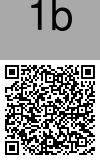
During this lesson, the instructor will have a candid discussion with the student/candidate with regards to Medical, Psychological, and Physiological factors related to safe aviation. Glider pilots are not required to have any medical certifications, but this does not mean that a pilot can fly gliders while under the influences of certain medications or while suffering from certain physiological issues.
The discussion with the instructor MUST include a review of illnesses, congenital, acute and chronic; as well as a discussion of the pilot's current medications. This should be done early in the pilot's training program.
Positioning of the seat back to the best notch and positioning & locking the pedals to the correct extension allows the student to reach instrument panel, reach the canopy, control the stick with finger pressures and wrist movements (instead of gross arm movements), increases comfort, and reduces fatigue. This fitting of the aircraft should be performed on the first flight.
When complete, the student will:
15 disqualying medical conditions:

During this lesson, the Instructor will present the use of the controls in the cockpit and their effect on the control surfaces. In addition, any time there is an exchange of controls, the student and instructor must use the FAA-approved method of "Positive Exchange of Controls."
When complete, the student will:

The instructor will teach the components of the cockpit, instruments and seating.
None
When complete, the student will:

The instructor will teach the procedure of the "Positive Control Check"
When complete, the student will be able to demonstrate a satisfactory positive control check

The instructor will teach the student/candidate the function of the tow release, including the differences in the Schweizer and Tost release mechanisms
The student must be able to:


The instructor will teach the student/candidate the proper procedure of extracting the aircraft from the hangar, and bringing the aircraft to the flight line
The student must be able to perform:
The student must be able to explain:

The instructor will teach the student/candidate the proper procedure of returning the glider to its slot in the hangar without damage to the aircraft
The student must be able to perform:
The student must be able to explain:
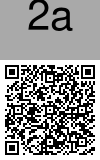
During this lesson, the student/candidate will learn the procedures for a successful pre-takeoff checklist, including the importance of each item on the checklist.
The student must be able to perform either of the club standard checklists (at the student's preference) without prompting from the instructor
The student must be able to explain:

During this lesson, the student will understand the need for proper scanning for aircraft, using attitude to judge and determine speed and bank.
When complete, the student will:

The student/candidate will learn the importance of the glider daily inspection, the correct procedure and habits of a successful preflight.
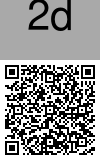
During this lesson, the student/candidate will learn the appropriate airport procedures, including the shape of the traffic pattern. The student will learn the airport markings, and procedures for avoiding runway incursions. Candidates for the Practical test will be expected to know about Land and Hold Short (LAHSO) procedures at controlled airports.
When complete, the student will understand the role and function of the pattern, and most importantly the complete flexibility of the pattern. The student will also understand that the pattern is not the goal, getting the aircraft on the ground is the goal. The student will be able to explain:

Cockpit management relates to the organization of items in the cockpit, the briefing of passengers on the cockpit controls and use of seat harnesses. The PTS requires that candidates demonstrate the ability to brief passengers in the use of seatbelts and seat harnesses, as well as the ability to manage loose items in the cockpit.
Also of critical importance, the student will learn the appropriate actions to be taken if the canopy opens while in-flight.
When complete, the student will:

The instructor will teach the student the appropriate procedure for aerotow release.
When complete, the student will be able to:

The candidate must know all of the ground signals used by the line crew, for different circumstances, such as take up slack, open and close the tow hook, hold, begin takeoff, stop, release towline, and emergency stop.
The candidate must also know all of the SSA standard signals used between the glider and towplane.
Student Pilot: 14 CFR §61.87(i)(11)
Private Pilot Test Candidate: PTS Area of Operation IIE
The student/candidate will know: The following hand signals:
The following in-flight visual signals:
When complete, the student will know and be able to demonstrate all of the signals listed above.

The student will learn the procedures and skills necessary for a takeoff on aerotow. This includes the initial rollout to the beginning of the climb-out.
Here is an illustration of a normal takeoff, a high-definition video running 1:26. No two takeoffs will look exactly alike, but this will give you an idea of the view from the cockpit if you've never seen one: The Takeoff .
When complete, the student will:
Before the glider takes off:
Before the towplane takes off, and after the glider is airborne:
After the towplane is airborne:
Other factors to safe take-off

The candidate must learn the correct procedures for safe conduct of normal aerotow procedures.
The candidate will learn:
When complete, the student will:
Note to students: This will take several lessons to accomplish.

The candidate must be able to fly the glider on a specified heading, and continually maintain that heading, at a desired airspeed of the instructor's choosing. The candidate must do so with smooth control inputs, so that the glider is in constant coordinated flight.
The student will learn the elements of straight flight, which includes:
When complete, the student will:
Note: The criteria for evaluation in this section are taken directly from the PTS.

The candidate will learn the elements related to turns, specifically; shallow, medium, and steep turns. Included in this lesson plan is the relationship of dihedral effect to shallow turns, and the effect of the overbanking tendency on steep turns. It is critical to note that the candidate must always be vigilant for air traffic, and will with each and every turn, look for air traffic before initiating any turn.
The candidate will learn:
When complete, the student will:
Note: All criteria for evaluation are taken directly from the Private Pilot Practical Test Standards.

During this lesson the instructor will demonstrate a normal landing. The student will perform supervised landings, and when proficient, will be able to execute a normal landing without coaching or intervention from the instructor. To achieve the objective of this lesson, it will certainly take many flights.
For the purposes of training, the term Normal Landing in this lesson plan indicates benign atmospheric condition, and does not include crosswind, tailwind, or landing in strong headwinds.
The student must demonstrate proficiency in landing on both the paved runway and the grass safety area in order to achieve level 3 (solo proficient) or level 4 (rating proficient).
Here are some examples of a reasonable pattern and landing. The video from the Soaring Safety Foundation is comprehensive and explains what matters in a checkride.
When complete, the student will:

The student will learn how to perform from high tow to low tow, and back to high tow, while transitioning directly through the tow plane's wake.
The student must be able to perform:
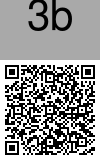
The student must be able to perform:
The student must be able to explain:

The student will learn the shape, go ahead-points, and most of all, the flexibility of the pattern.
The student will NOT focus on bad habits such as rigid adherence to specific altitudes at certain points in the pattern. It must also be stressed that rigid, square perfection is NOT the goal of the pattern. Every pattern is different, and it must be viewed as a tool to the primary and ultimate goal -- getting to the runway safely.
The student must be able to perform:
The student must be able to explain:
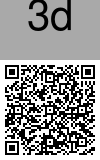
The student will learn how to fly the glider on the cusp of a stall -- without allowing the glider to actually stall. If performed correctly, the glider will show many or all of the six signs of a stall. Also, the student will be expected to perform shallow-banked turns while flying in Minimum Controllable Airspeed (MCA).
The student must be able to perform:

The student will learn the procedures for turning out on a heading. The student will also learn the different types of error with a magnetic compass.
The student must be able to perform:
The student must be able to:

The student will learn what causes a stall, how to perform a stall, how to recover from a stall. This lesson includes stalls with brakes open. This lesson does not include turning or cross-controlled stalls.
The student must be able to perform:
The student must be able to explain:

The student will learn the entry and recovery from a stall with and without airbrakes
The student must be able to perform:
The student must be able to explain:

The student will learn typical modes of entry into, and methods of recovery from, unusual attitudes including spins and spiral dives. The student will also learn the concept and limitations of the "benign spiral" descent mode. As an optional task for post-solo (and for rated pilots), spins may be demonstrated and practiced if requirements are met.
Student Pilot Candidates: (Maneuvers and procedures for pre-solo flight training in a glider)§61.87(i)(15)
Instructor demonstration:
• Overbanking tendency into spiral dive entry
• Spiral dive entry from spin or departure (from controlled flight) conditions
• Initial slow-speed aft-stick-limited spiral dive
• Transition to high-speed g-limited spiral dive
• Spiral dive recovery procedure
• Nose-high slow airspeed recovery procedure
• Initiation of benign spiral descent mode
~~~~~~~~~~~~~~~~~~~~
To demonstrate and practice spins, only the club ASK-21 N321K with spin kit attachment may be used. Spins may be demonstrated and practiced after solo but before a checkride, if desired, or this task may be flown at any time by rated pilots (with instructor).
• Study N321K POH, including TN4B with two attachments, for spin description, entry and recovery procedure, restrictions, and spin kit details
• Ensure aileron and elevator seals are taped and air-tight
• Briefing on spin entry and recovery procedures required before flight
• Weigh-in on day of flight at the airfield, as dressed for flight
• Compute CG and number of spin kit disks to achieve 73% aft CG (16”) without exceeding MAGW
• Install spin kit bolt, disks, nut, and pin before flight
• Remove spin kit bolt, disks, nut, and pin after flight
• Recommend at least a 4000’ AGL tow (5000’ AGL preferred) to allow for multiple spins, if practical
• Typical altitude loss per turn in a spin is 200’, up to 250’
• Typical altitude loss during recovery is less than 300’ from initiation of recovery through return to normal flight attitude
• Minimum altitude to initiate spin recovery is 2500’ AGL (know the elevation of the ground below!)
• Minimum planned altitude to complete spin recovery is 2000’ AGL
Instructor demonstration:
• CG calculation and spin kit installation
• Spin entry and recovery (if needed, 1-turn spin recommended)
Student practice:
• Slow flight
• Stall from slow flight (note stall speed, needed for normal spin entry)
• Spin entry and recovery (2-turn spin recommended)
The student must be able to explain:
• How aft CG affects the susceptibility of the glider to enter, sustain, and recover from spins
• The importance of keeping spoilers closed and locked during dive recovery
• How to calculate the CG and desired number of spin kit weights
• The recovery technique from a spin, and hazards of incorrect techniques
The student must be able to perform:
• Recovery from a normally entered spin
All study items listed above, plus:
• Skyline Soaring POH for ASK-21 N321K including TN4b spin kit details, procedures, restrictions
• Skyline Soaring cockpit cards for ASK-21 N321K
• Skyline Soaring weight and balance worksheet and/or spreadsheet for ASK-21 N321K
• AOPA search on spin topics
• FAA Advisory Circular on Spin Training
• FAA Airplane Handbook, Spin Awareness
• Spinning, by Kai Gertsen
• Avoiding the Spin

Prior to solo, the student will learn local landmarks and how to judge distance from the airport and glide range in order to assure safe return for a normal pattern and landing. Prior to checkride endorsement, the student will learn how to plan a cross-country task for landing at another airport. As an optional post-solo task, the student may be introduced to basic navigation tools including glide computers and GPS-based moving map applications.
Private Pilot Candidates: (Maneuvers and procedures for private pilot in a glider) §61.107(b)(6)(viii) “Navigation”
Instructor demonstration:
Student practice:
The student must be able to explain:
The student must be able to perform:
If the student wishes to explore available glide computer and GPS-based moving map options, they are encouraged to work with an instructor to obtain and configure any simple tools on the hardware platform of their choice, independent of links to glider hardware. These may include applications such as SeeYou Navigator [iPhone] [Android] or XCSoar for Android hardware, and SeeYou Navigator or Lufty or iGlide for IOS hardware. Even simpler free options may include GPS applications that show current position and altitude and provide range and bearing to a target location such as the home airport. The focus should be on doing the preparation before flying to allow the tools to be used with minimum distraction inflight. Preparation would need to include configuration of data files for airspace, maps, airfields and turnpoints, and glider performance data. Inflight practice may include flying a declared simple course to turnpoints within easy glide distance of the airport.

The student will review scanning techniques. The student will learn of the hazards of wind shear; the student will learn the hazards of wake turbulence.
The student must be able to perform:
The student must be able to explain:

Our soaring environment requires us to use the correct radio procedures to interact with the Unicom, ground, and communicate with the towpilot.
Note: Even though the vast majority of glider pilots will never see ATC light signals in practice, the PTS states that instructors are required to teach ATC light signals to Practical Test candidates. The PTS candidate should at least be aware of ATC light signals. View §91.125.
The student must be able to perform:
The student must be able to:
Some Sample radio calls might be:

The lesson will learn the minimum sink speeds, how they relate to bank angle, and the importance of using the correct minimum sink speeds.
The student must be able to perform:
The student must be able to explain:

The student must learn and demonstrate slips before solo. Proper slip technique must also be demonstrated on the practical exam. The student will get the opportunity to practice slips, and must understand the difference between the different types of slips. The student will also learn when the use of a slip is appropriate, and when it is not appropriate.
The student must be able to perform:
The student must be able to explain:

The lesson will learn the concept of speed to fly -- the most appropriate speed given lift, headwind, tailwind or sink.
The student must be able to perform:
The student must be able to explain:

The lesson will allow the student to demonstrate manuvering behind the tow plane to different established positiong with regard to the tow plane's wake. The maneuvers will be done in a fashion that is described by the FAA's Practical Test Standards: "Maneuvers the glider, while on tow, slightly outside the towplane’s wake in a rectangular, box-like pattern."
There is no rush for this procedure. It is more important to take your time and get to all of the points on tow in a controlled and precise manner. As a matter of convention and habit, Skyline Instructors and students usually combine the tasks of the Hi-Low Tow transition with the boxing of the wake with the following procedure:
The maneuver can be in either a clockwise or counter-clockwise direction.
NOTE: During the practical test the examiner may ask for you to perform the maneuvers of "High-Low Tow Transition" separately from "Boxing the Wake." In this circumstance, boxing the wake does NOT include transitioning through the wake at the beginning of the maneuver. The candidate would maneuver around the wake without ever making contact with the tow plane's wake.
If the box-wake maneuver is being performed separately from the Hi-Low Tow Transition, execute the following procedure. The following example is for clockwise direction. Either direction is possible.
Generally speaking, the low tow position behind the Pawnee is indicated when the horizontal stabilizer is lined up with the tow pilot's rear view mirror. Behind the Husky, the low tow position is achieved when the elevator is lined up with the wing. For both tow planes, the glider pilot knows that he has gone far enough to the side when the tail wheel and main wheels appear to line up.
The candidate must:

The student must be able to take off with slight to moderate cross-winds. During the takeoff roll, the pilot must exhibit control to maintain runway centerline. After take-off, but before the towplane has left the ground, the candidate must crab into the wind to maintain runway centerline. After the towplane is in the air, the glider should resume normal high-tow position. During this maneuver, the candidate must maintain appropriate position at all times.
To determine that the applicant:

The student must be able to land with slight to moderate cross-winds. The pilot must exhibit control to maintain runway centerline on approach, flare, and touchdown. On landing and roll-out, the candidate must maintain runway centerline, despite the crosswind. The candidate may use slip or crab to correct for the crosswind component on the approach.
To determine that the applicant:

Although this is not required by an of the Practical Test Standards, nor is it required by 61.87 for pre-solo knowledge, knowing how to take-off without a wing-runner can be a useful skill to have. The candidate will learn the procedures for a safe take-off without a wing-runner, and will learn when it is safer not to take-off without a wing-runner (such as from a CG-tow-hook only glider)

The student will learn what to do if some of the flight instruments become inoperable. If the alitmeter becomes inoperative, the student will use visual cues to determine altitude, and guide the glider to a safe landing. If the airspeed indicator stops working, then the candidate will use reference to attitude and slipstream noise to judge airspeed.
The student should also be able to explain the situations which could lead to each of these instruments failing.
The student must be able to perform:

This lesson will show the student the ability to land on a specific point, and stop within a specified distance, determined by the instructor. This is training for the event of an unplanned off-airport landing.
The student will complete this task when he/she exhibits knowledge of the elements related to a simulated off-airport landing, including selection of a suitable landing area and the procedures used to accomplish an off-airport landing. The simulated off-airport landing can be demonstrated by a landing on the grass. The precision touch-down and stops can be evaluated with markers in the grass. We usually use four paint can lids spaced 30 paces apart, lined up on the center of the grass strip, touching down in an area adjacent to the runway numbers on the paved runway. The usual stop is somewhere adjacent to the fuel farm

This lesson is to have the student demonstrate the ability to use either a forward slip (previously practiced at altitude in Lesson 4d), on the final approach. Use the forward slip primarily for altitude loss, and the side slip for runway alignment or lateral re-positioning.
The student must be able to perform:

In our club, most of the flights that last longer than 20 minutes exploit thermal lift to gain or sustain altitude. This lesson plan introduces thermal soaring techniques, predicting thermal behavior, and gives the candidate the ability to locate and use thermal lift. This lesson also will give techniques to return to a lost thermal.
Practical Test Standards for Thermal Flight:
The student must be able to perform
The student must be able to explain:

Most students do not get to experience ridge soaring, even at our club. Skyline Soaring offers an excellent training ridge nearby. During the Spring and Fall months, the nearby Massanutten ridge comes alive with strong lift, safe land-out fields. Unfortunately, this activity also is accompanied by hazards.
Practical Standards for Ridge Soaring:
Objective. To determine that the applicant:

Wave Soaring is not common throughout the United States, especially in the flatlands of the midwest and southeast. However rare wave lift may be for some regions, Skyline Soaring is blessed with 20 to 30 flyable days with wave lift every year. However, since we operate only on weekends and occasional weekdays, the total number of days we can use this lift is reduced. During this lesson plan, the student will learn the basics of wave formation, techniques of soaring in wave, and the hazards associated with rotor turbulence and the extreme sink of the lee side of the wave.
Practical Test Standards:
Objective. To determine that the applicant:
The student must be able to explain
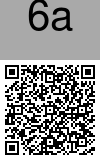
Inevitably, the glider pilot may be faced with the situation of slack line in the tow rope. These situations happen especially during gusty conditions, during towplane malfunctions (towplane decelerating), getting terribly out of position, rapid towplane banking, or just flying cross-country on aerotow. The instructor may call the tow pilot and ask him to reduce his rate of climb, and will demonstrate getting into slack rope situations, and how to deal with them smoothly.
Practical Test Standards:
Objective. To determine that the student:
The student must be able to perform:
The student must be able to explain:
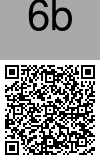
Aerotow emergency procedures include: glider can not release, towplane can not release, towplane power failure (at various times in the flight), abort of take-off near the ground, rope breaks. During this lesson segment, the student will learn the tools of recovery from these situations.
Practical Test Standards:
Objective. To determine that the applicant:
The student must be able to perform:
The student must be able to explain:

The candidate will learn the differences between Maneuvering Speed (VA), Normal Operating Speed (VNO), and Never-Exceed Speed(VNE). The candidate will identify what hazards are associated with each airspeed. The instructor and student will fly together in dual practice, and accelerate to VA, for at least a few moments, to get a feel for the stick sensitivity at this speed. Flight to VNE is NOT required.
The student must be able to perform:
The student must be able to:

During the normal course of operating gliders on aerotow, the rope occasionally breaks before the pilot desires to release from the towplane. The aim of this lesson is to immediately react to the rope break and land the glider in a safe manner. The term PT3 (Premature Termination of The Tow) is often used instead of "rope break" to include all modes of failure included in this lesson plan. Ideally, the candidate will have performed at least three PT3 flights, each one in a different mode of flight. At around 50 feet (with straight ahead landing). At or around 200-300 feet, for a 180 return-to-base, and above 300 feet for an abbreviated pattern.
The student must be able to:

It is common for new pilots to experience Pilot-Induced Oscillations, usually in the pitch axis. The PIO can happen in any phase of flight, but the most dangerous is in the final moments of flight, or during the ground roll-out. The instructor will discuss strategies with the student on minimizing the probability of having a high-energy landing turn into a PIO that can damage the tail boom.
none
The candidate must be able to consistently land the glider at minimum energy (with spoilers deployed).
For the ASK-21 trainers, our club instructors emphasize the two-point landing technique: tail wheel and main wheel landing simultaneously. The "fly-it-on" landing strategy is highly discouraged for these gliders, although note that it is appropriate for this technique when landing Schweizer gliders.

Optimally, gliders will land into the wind. Occasionally, the glider must be landed with a tailwind. This lesson plan covers the issues related to a downwind landing. On downwind approaches, a shallower approach angle should be used, depending on obstacles in the approach path. Use the spoilers/dive brakes and perhaps a forward slip as necessary to achieve the desired glide path.
The student must be able to perform:
The student must be able to explain:

This lesson focuses on the portion of the flight after touching down on the runway. Unlike most glider operations in the US, this club operates mostly on the paved surface, which has the extra hazard of runway lights. While operating at Front Royal, it is critical to maintain a roll-out along the runway's center-line. Clearing the runway MUST never be done before the glider has come to a complete stop.
The student must be able to perform:

For most privately-owned gliders, assembly is a daily part of the glider flying ritual. Understanding how to assemble the glider safely is critical to safety. Logistics often prevent the candidate from assembling the club's two seaters, but the candidate should at the very least be knowledgeable in the assembly and disassembly procedures of the club's two seaters. The task of assembly can be done on a private member's glider instead.
The student must be able to perform:
The student must be able to explain:

After the glider is done flying for the day, it needs to be inspected to see if any new damage has happened during the flying day. Also, it is important to wash the wings with clean rags and water to remove any dead bugs that have accumulated on the wing surfaces
The student must be able to perform:
The student must be able to explain:

For most privately-owned gliders, assembly is a daily part of the glider flying ritual. By the end of the flying day, or when the glider has made an off-airport landing, the glider must be correctly disassembled and stored in its trailer correctly. The practical test doesn't have a "Disassembly" section, but does include a "Post-flight inspection" section. The entries for the "Completion Standards" section below come from the post-flight inspection of the practical test standard.
The student must be able to perform:
The student must be able to explain:

Students are required by 61.87(b) to pass a written test. The test must address the student pilot's knowledge of-
applicable sections of parts 61 and 91 of this chapter; airspace rules and procedures for the airport where the solo flight will be performed; and flight characteristics and operational limitations for the make and model of aircraft to be flown.
| Pre-solo aeronautical knowledge: section 61.87(b). I certify that [First name, MI, Last name] has satisfactorily completed the pre-solo knowledge test of § 61.87(b) for the [make and model (M/M] aircraft. |

All pilots operating aircraft within 60 nautical miles of the Washington VOR/DME must have successfully completed the FAA's Special Awareness Training. This training is only on-line, and successful completion results in a certificate. This must be done by all pilots in Skyline Soaring Club. This training need only be accomplished once.

The objective of this lesson is the completion of training for the Private Pilot or Commercial Pilot certificate with a glider category rating as evidenced by an instructor sign-off for the practical test.
The instructor will certify completion of all training requirements by verifying that all lesson elements 1 through 7 of the Student Progress Report are completed to the Rating level.
The instructor will verify that the student has passed the required knowledge test.
The instructor will conduct a minimum of three flights with the student preparatory for the practical test, covering the required elements of §61.107 for the Private Pilot certificate or §61.127 for the Commercial Pilot certificate.
The instructor will verify that the student’s logbook contains signoffs for aero tow, glider assembly/disassembly, and solo flight in the glider to be used for the practical test, and verify that the student’s student license is correctly endorsed.
The instructor will assist the student in the preparation of the Application for an Airman Certificate using IACRA (https://iacra.faa.gov/iacra/). Paper versions of the 8710-1 application are no longer accepted.
Required by § 61.87(c). AC 61-65K A.6 and / or AC 61-65K A.7 This endorsement must be current!
|
I certify that [First name, MI, Last name] has received the required training to qualify for solo flying. I have determined they meet the applicable requirements of § 61.87(n) and are proficient to make solo flights in [M/M]. |
| - or - |
| I certify that [First name, MI, Last name] has received the required training to qualify for solo flying. I have determined that they meet the applicable requirements of § 61.87(p) and are proficient to make solo flights in [M/M]. |
Required when acting as PIC of an aircraft in solo operations when the pilot does not hold an appropriate category/class rating: § 61.31(d)(2). AC 61-65K A.76
| I certify that [First name, MI, Last name] has received the training as required by § 61.31(d)(2) to serve as a pilot in command in a [specific category and class] of aircraft. I have determined that they are prepared to solo that [M/M] aircraft. Limitations: [optional]. |
Required by § 61.31(j). AC 61-65K A.83
| I certify that [First name, MI, Last name], [grade of pilot certificate], [certificate number], has received the required training in a glider [M/M] for [ground-tow, aerotow, self-launch] procedure. I have determined that they are proficient in [ground-tow, aerotow, self-launch] procedure |
Prerequisites for practical test: Title 14 of the Code of Federal Regulations (14 CFR) part 61, § 61.39(a)(6)(i) and (ii).
AC 61-65K A.1
| I certify that [First name, MI, Last name] has received and logged training time within 2 calendar months preceding the month of application in preparation for the practical test and they are prepared for the required practical test for the issuance of [applicable] certificate. |
Review of deficiencies identified on airman knowledge test: § 61.39(a)(6)(iii) as required. AC 61-65K A.2
| I certify that [First name, MI, Last name] has demonstrated satisfactory knowledge of the subject areas in which they were deficient on the [applicable] airman knowledge test. |
Flight proficiency/practical test: §§ 61.103(f), 61.107(b), and 61.109. AC 61-65K A.37
| I certify that [First name, MI, Last name] has received the required training in accordance with §§ 61.107 and 61.109. I have determined they are prepared for the [name of] practical test. |
Prerequisites for practical test: Title 14 of the Code of Federal Regulations (14 CFR) part 61, § 61.39(a)(6)(i) and (ii).
AC 61-65K A.1
| I certify that [First name, MI, Last name] has received and logged training time within 2 calendar months preceding the month of application in preparation for the practical test and they are prepared for the required practical test for the issuance of [applicable] certificate. |
Review of deficiencies identified on airman knowledge test: § 61.39(a)(6)(iii) as required. AC 61-65K A.2
| I certify that [First name, MI, Last name] has demonstrated satisfactory knowledge of the subject areas in which they were deficient on the [applicable] airman knowledge test. |
Required by §§ 61.123(e), 61.127, and 61.129. AC 61-65K A.39
| I certify that [First name, MI, Last name] has received the required training of §§ 61.127 and 61.129. I have determined that they are prepared for the [name of] practical test. |

Once you solo, you are well on your way to getting an "A" badge. Receiving the "A" badge is not automatic. All Skyline Soaring Club Instructors are certified Soaring Society of America Instructors (SSAI), and can issue you your first "A" badge after solo.
Preflight Phase
Applicant Demonstrates Knowledge of:
Applicant Possesses:
Presolo Phase
Applicant Has Completed the Following Minimum Flight Training Program:
| Pre-solo aeronautical knowledge: section §61.87(b). I certify that [First name, MI, Last name] has satisfactorily completed the pre-solo knowledge test of § 61.87(b) for the [make and model (M/M] aircraft. |
| Pre-solo flight training: section §61.87(c). I certify that [First name, MI, Last name] has received and logged pre-solo flight training for the maneuvers and procedures that are appropriate to the [M/M] aircraft. I have determined they have demonstrated satisfactory proficiency and safety on the maneuvers and procedures required by § 61.87 in this or similar make and model of aircraft to be flown. |
| Launch procedures for operating a glider: section §61.31(j). I certify that [First name, MI, Last name] has received the required training of § 61.157(b)(2) for an addition of a [name of the specific category/class/type] type rating. |
| Launch procedures for operating a glider: section §61.31(j). I certify that [First name, MI, Last name], [grade of pilot certificate], [certificate number], has received the required training in a glider [M/M] for [ground-tow, aerotow, self-launch] procedure. I have determined that they are proficient in [ground-tow, aerotow, self-launch] procedure. |
| To act as pilot in command of an aircraft in solo operations when the pilot does not hold an appropriate category/class rating: §61.31(d)(2). I certify that [First name, MI, Last name] has received the training as required by § 61.31(d)(2) to serve as a pilot in command in a [specific category and class] of aircraft. I have determined that they are prepared to solo that [M/M] aircraft. Limitations: [optional]. |

After solo, the Student/Candidate must demonstrate the ability to use lift sources to prolong a glider flight.

After solo, the Student/Candidate must demonstrate the ability to use lift sources to prolong a glider flight. There are also dual-flight requirements for the "C" badge.
Applicant has completed the following flight training:

In order to do cross-country flight in any club equipment, club rules dictate that the candidate must have a sign-off for that cross-country flight. A bronze badge meets many of the requirements, and demonstrates the candidate's skills necessary from safe cross-country flight.
Cross-Country Readiness
Applicant Must:

To assist members in achieving a reasonable level of proficiency and safety, whether at the beginning of the soaring season, or any time required by club special currency requirements.
The member will demonstrate a level of safety in performance acceptable to the CFI conducting the review.
Instead of just doing a flight around the pattern for a stage check, consider applying some of these credits toward the FAA WINGS Program

To assure that all Club members are fully compliant with the regulatory requirements (q.v.) for flight reviews, including biennial flight and ground training as appropriate to the member's ratings and status.
Review of general operating and flight rules of CFR 14 FAR 91; a review of maneuvers and procedures that, at the discretion of the CFI providing the review, are necessary for the safe exercise of the privileges of the member's certificate.
It must include one hour of ground instruction covering part 91. The contents of the ground instruction are up to the instructor to decide.
It must also include one hour of flight instruction. If one hour of flight instruction is not practical, glider pilots may substitute at least three flights "to pattern altitude".
Pilots who hold a current CFI rating and who have satisfactorily completed a renewal of a flight instructor certificate under the provisions in §61.197 need are exempt from the one hour of ground instruction, as per 61.56(f).
The completion standards are at the discretion of the flight instructor providing the review.
After the successful completion of the flight review, the instructor will indicate so with a logbook endorsement. Below is a sample sign-off with text taken from FAA Advisory Circular 61-65G. The flight review is only valid for pilots possessing an airman rating with the glider category.
| Completion of a flight review: section §61.56(a) and (c). I certify that [First name, MI, Last name], [grade of pilot certificate], [certificate number], has satisfactorily completed a flight review of § 61.56(a) on [date]. |
NOTE: No logbook entry reflecting unsatisfactory performance on a flight review is required. Simply log instruction received in this circumstance.
It is possible to receive WINGS credit after successfully completing a flight review. However, more training is required than the minimum flight review as described in 14 CFR 61.56(a). The full details for the additional requirements are in the WINGS Activity named: "APT-Glider Flight Review" .
To earn this Phase of WINGS the airmen under review must successfully accomplish the following:
| Completion of any phase of an FAA-sponsored Pilot Proficiency Program (WINGS): § 61.56(e).
I certify that [First name, MI, Last name], [grade of pilot certificate], [certificate number], has satisfactorily completed Level: [Basic/Advanced/Master, as appropriate], PHASE NO. [..] OF A WINGS PROGRAM ON [DATE]. |
| Lesson | Phase | FAR Requirement | PTS Area | Instructor Sign-Off and Date |
| 1 | Before We Fly | |||
| 1a | Preflight Planning / Overview | 61.87(i)(1) | 61.107(b)(6)(i),(ii) | |
| 1b | Aeromedical Factors Discussion | I(E) | ||
| 1c | Use of Controls | |||
| 1d | Cockpit Familiarization | |||
| 1e | Positive Control Check | 61.87(i)(1) | II(C) | |
| 1f | Release Mechanisms | 61.87(i)(1) | II(C) | |
| 1g | Handling - Hangar to Flightline | 61.87(i)(2) | II(B) | |
| 1h | Handling - Flightline to Hangar | 61.87(i)(2) | 61.107(b)(6)(xi) | |
| 2 | First Flights | |||
| 2a | Pre Takeoff Checklist | 61.87(i)(1) | IV(A) | |
| 2b | Attitude Flying / Scanning | 61.87(i)(6) | ||
| 2c | Glider Daily Inspection | 61.87(i)(1) | I, II(C) | |
| 2d | Airport Procedures | 61.87(i)(5) | 61.107(b)(6)(iii) | |
| 2e | Cockpit Management | II(D) | ||
| 2f | Aerotow Release | 61.87(i)(11) | IV(F) | |
| 2g | Visual Signals | 61.87(i)(11) | II(E) | |
| 2h | Normal Takeoff | 61.87(i)(3) | IV(B) | |
| 2i | Normal Aerotow | 61.87(i)(12) | IV(C) | |
| 2j | Straight Glide | 61.87(i)(4) | VII(A) | |
| 2k | Shallow, Medium, Steep Turns | 61.87(i)(4) | VII(C) | |
| 2l | Normal Landing | 61.87(i)(16) | 61.107(b)(6)(iv) | |
| 3 | Core Flights | |||
| 3a | Hi-Low Tow Transition | 61.87(i)(12) | IV(C) | |
| 3b | Before-landing Checklist | 61.87(i)(16) | IV(Q)(8) | |
| 3c | Traffic Pattern | 61.87(i)(10,16) | IV(Q) | |
| 3d | Minimum Controllable Airspeed | 61.87(i)(8) | V(A), IX(A) | |
| 3e | Turns to Heading | VII(B) | ||
| 3f | Forward Stall, with and without airbrakes | 61.87(i)(14) | 61.107(b)(6)(ix) | |
| 3g | Turning Stall, with and without airbrakes | 61.87(i)(14) | 61.107(b)(6)(ix) | |
| 3h | Spirals, Descents | 61.87(i)(15) | ||
| 3i | Navigation | 61.107(b)(6)(viii) | ||
| 4 | Advanced Skills | |||
| 4a | Collision, Windshear & Wake Turbulence Avoidance | 61.87(i)(6) | IV(G) | |
| 4b | Radio Procedures | III(A) | ||
| 4c | Minimum Sink | 61.87(i)(8) | V(A) | |
| 4d | Slips: Forward, Side, Turning | 61.87(i)(7) | IV(R) | |
| 4e | Best L/D; Speed-to-fly | 61.87(i)(8) | 61.107(b)(6)(vii) | |
| 4f | Boxing the Wake | 61.87(i)(12) | IV(E) | |
| 4g | Crosswind Takeoff | 61.87(i)(3) | IV(B) | |
| 4h | Crosswind Landing | 61.87(i)(16) | IV(Q) | |
| 4i | Unassisted Takeoff | |||
| 4j | Covered Instrument Landings | 61.87(i)(9) | X(A) | |
| 4k | Precision Landings and Stops | 61.87(i)(16) | X(A) | |
| 4l | Slips to Landing | 61.87(i)(17) | IV(R) | |
| 5 | Soaring Techniques | |||
| 5a | Thermal | 61.87(i)(18) | 61.107(b)(6)(vi) | |
| 5b | Ridge | VI(B) | ||
| 5c | Wave | VI(C) | ||
| 6 | Unusual Attitudes and Emergencies | |||
| 6a | Slack Line | 61.87(i)(9),(19) | IV(D) | |
| 6b | Aerotow Emergency Procedures | 61.87(i)(9),(19) | 61.107(b)(6)(x) | |
| 6c | V-Speeds | 61.87(i)(8) | 61.107(b)(6)(v) | |
| 6d | Rope Breaks | 61.87(i)(9),(19) | 61.107(b)(6)(x) | |
| 6e | Pilot-Induced Oscillations | |||
| 7 | Finishing Touches | |||
| 7a | Downwind Landing | 61.87(i)(16) | IV(S) | |
| 7b | Taxiing and Clearing Runway | 61.87(i)(2) | XI | |
| 7c | Assembly | 61.87(i)(13) | II(A) | |
| 7d | Postflight Inspection | 61.107(b)(6)(xi) | ||
| 7e | Disassembly | 61.87(i)(13) | ||
| 7f | Pre-Solo Written Test | 61.87(b) | ||
| 7g | Special Awareness Training | 91.161 | 91.161 | |
| 7h | Checkride Rating Endorsement | PTS p5 | ||
| 8 | Solo and Badges | |||
| 8a | First Solo and the A Badge | |||
| 8b | The B Badge | |||
| 8c | The C Badge | |||
| 8d | The Bronze Badge | |||
| 9 | Continuing Training | |||
| 9a | Proficiency or Stage Check | |||
| 9b | Flight Review |
I affirm that I, __________________________________________________, have received satisfactory and complete instruction for solo flight, including all applicable topics listed above, and as also as defined in 14 CFR 61.87(i), 61.107(a), and 61.107(b). Student's Signature, _____________________________________, Date ____________ Instructor's Signature, ____________________________________Date ____________.